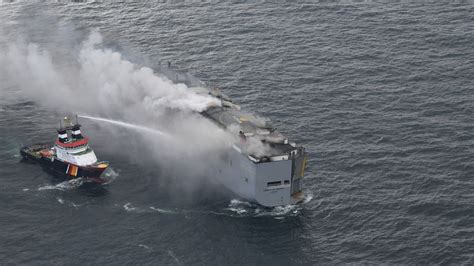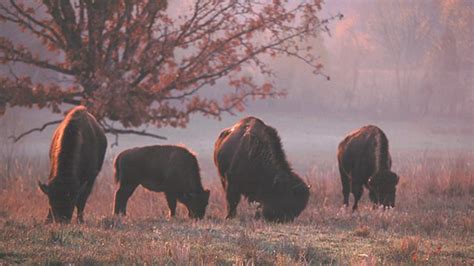
Endangered monkeys were discovered crammed into a crate at the Manila International Airport in the Philippines, sparking an investigation into wildlife trafficking.
Philippine authorities intercepted a shipment containing endangered monkeys at Ninoy Aquino International Airport, revealing a grim example of wildlife smuggling. The discovery occurred on Thursday when customs officials grew suspicious of a misdeclared shipment labeled as “food supplement/accessories,” according to the Bureau of Customs (BOC). Upon inspection, the crate was found to contain several monkeys, identified as endangered species.
The BOC stated, “Upon 100% examination, the shipment was found to contain different species of monkeys.” The agency immediately coordinated with the Department of Environment and Natural Resources (DENR) for proper identification and handling of the animals. The exact number of monkeys found was not immediately disclosed, but authorities confirmed they included protected species under international agreements.
The incident underscores the ongoing problem of wildlife trafficking through the Philippines, a country often used as a transit point for illegal wildlife trade due to its geographical location and extensive air and sea links. Initial reports suggest the monkeys may have originated from another country and were intended for delivery within the Philippines or transshipment to another destination.
The BOC has initiated an investigation to identify the individuals or groups responsible for the attempted smuggling operation. Charges are expected to be filed against those involved, potentially including violations of the Wildlife Resources Conservation and Protection Act and customs regulations. The penalties for wildlife trafficking can be severe, including lengthy prison sentences and substantial fines.
This interception highlights the crucial role of customs and environmental agencies in combating wildlife crime and protecting endangered species. Authorities are increasing their vigilance and employing advanced detection methods to prevent similar incidents from occurring in the future. The rescued monkeys are currently under the care of the DENR, where they will receive veterinary attention and be assessed for potential release back into their natural habitat, if feasible.
Expanded Details and Context
The interception of the endangered monkeys at Ninoy Aquino International Airport is not an isolated incident but rather a symptom of a larger global crisis: the illegal wildlife trade. This trade encompasses the poaching, trafficking, and sale of animals and plants, often driven by demand for exotic pets, traditional medicine, or luxury goods. The Philippines, with its vast archipelago and bustling ports, has become a significant transit point in this illicit network.
The Scale of Wildlife Trafficking
Wildlife trafficking is estimated to be worth billions of dollars annually, ranking among the most lucrative forms of transnational organized crime, alongside drug trafficking, human trafficking, and arms smuggling. According to the United Nations Environment Programme (UNEP) and Interpol, environmental crime, including wildlife trafficking, generates an estimated $258 billion each year. This illegal trade not only threatens biodiversity but also undermines conservation efforts, fuels corruption, and poses risks to human health and security.
The demand for wildlife products comes from various sources. In some Asian countries, certain animal parts are believed to have medicinal properties and are used in traditional remedies. Exotic pets, such as monkeys, reptiles, and birds, are also highly sought after in certain markets, often commanding high prices. Additionally, products made from ivory, rhino horn, and other rare materials are considered status symbols and are purchased by wealthy individuals.
The Impact on Endangered Species
The illegal wildlife trade has a devastating impact on endangered species, pushing many to the brink of extinction. When animals are poached from their natural habitats, their populations decline, and their ecosystems are disrupted. The loss of biodiversity can have far-reaching consequences, affecting food chains, pollination, and other essential ecological processes.
Monkeys, in particular, are vulnerable to poaching and trafficking due to their relatively small size and perceived exotic appeal. Many species of monkeys are listed as endangered or threatened by the International Union for Conservation of Nature (IUCN). The capture and removal of these animals from their natural habitats can have a significant impact on their populations and the health of their ecosystems.
The Philippines as a Transit Point
The Philippines’ geographical location and extensive air and sea links make it a convenient transit point for wildlife traffickers. Smugglers often exploit the country’s porous borders and weak enforcement mechanisms to move illegal wildlife products through its ports and airports.
Several factors contribute to the Philippines’ vulnerability to wildlife trafficking. These include:
- Corruption: Bribery and corruption within government agencies can facilitate the movement of illegal wildlife products through ports and airports.
- Weak Enforcement: Limited resources and personnel can hinder the ability of law enforcement agencies to effectively monitor and intercept illegal shipments.
- Porous Borders: The Philippines’ extensive coastline and numerous islands make it difficult to control the movement of goods and people across its borders.
- Lack of Awareness: A lack of public awareness about the impacts of wildlife trafficking can make it difficult to mobilize support for conservation efforts.
The Role of Customs and Environmental Agencies
Customs and environmental agencies play a crucial role in combating wildlife trafficking. These agencies are responsible for inspecting shipments, enforcing wildlife laws, and prosecuting offenders. Effective collaboration between these agencies is essential to disrupt trafficking networks and protect endangered species.
In the Philippines, the Bureau of Customs (BOC) is responsible for inspecting shipments entering and leaving the country. The BOC works closely with the Department of Environment and Natural Resources (DENR) to identify and confiscate illegal wildlife products. The DENR is responsible for enforcing wildlife laws and managing protected areas.
Legal Framework and Penalties
The Philippines has a comprehensive legal framework for protecting wildlife and combating wildlife trafficking. The Wildlife Resources Conservation and Protection Act (Republic Act No. 9147) is the primary law governing wildlife conservation in the country. This law prohibits the hunting, collecting, possessing, transporting, and trading of protected species.
The penalties for violating the Wildlife Resources Conservation and Protection Act can be severe, including imprisonment and substantial fines. The severity of the penalties depends on the species involved and the nature of the offense. For example, the trafficking of critically endangered species can result in a prison sentence of up to 12 years and a fine of up to PHP 1 million (approximately USD 20,000).
In addition to national laws, the Philippines is also a signatory to several international agreements aimed at combating wildlife trafficking. These include the Convention on International Trade in Endangered Species of Wild Fauna and Flora (CITES), which regulates the international trade in endangered species.
Efforts to Combat Wildlife Trafficking
The Philippine government has taken several steps to combat wildlife trafficking, including:
- Strengthening Enforcement: Increasing the number of customs and environmental officers and providing them with better training and equipment.
- Improving Coordination: Enhancing collaboration between government agencies, NGOs, and international organizations.
- Raising Awareness: Educating the public about the impacts of wildlife trafficking and promoting responsible consumer behavior.
- Enhancing Legislation: Reviewing and strengthening existing laws to ensure that they are effective in deterring wildlife crime.
- Using Technology: Implementing advanced technologies, such as X-ray scanners and DNA testing, to detect illegal wildlife products.
The Case of the Smuggled Monkeys
The recent discovery of endangered monkeys at Ninoy Aquino International Airport underscores the need for continued vigilance and strengthened enforcement efforts. The fact that the shipment was misdeclared as “food supplement/accessories” highlights the deceptive tactics employed by wildlife traffickers.
The monkeys are currently under the care of the DENR, where they are receiving veterinary attention. The DENR will assess the monkeys’ health and determine whether they can be released back into their natural habitat. If release is not feasible, the monkeys will be placed in a sanctuary or zoo.
The investigation into the smuggling operation is ongoing. Authorities are working to identify the individuals or groups responsible for the attempted trafficking. The BOC has vowed to prosecute those involved to the fullest extent of the law.
The Importance of International Cooperation
Combating wildlife trafficking requires international cooperation. Traffickers often operate across borders, and effective enforcement requires collaboration between countries. International organizations, such as Interpol and the United Nations Office on Drugs and Crime (UNODC), play a crucial role in facilitating cooperation between countries and providing technical assistance.
Countries can work together to share information, coordinate investigations, and harmonize laws. They can also provide financial and technical support to countries that are struggling to combat wildlife trafficking.
The Role of Consumers
Consumers also have a role to play in combating wildlife trafficking. By making informed choices about the products they purchase, consumers can reduce the demand for illegal wildlife products. Consumers should avoid buying products made from endangered species and should support businesses that are committed to sustainable practices.
Educating oneself about the impacts of wildlife trafficking and spreading awareness among friends and family can also help to reduce the demand for illegal wildlife products.
The Future of Wildlife Conservation
The future of wildlife conservation depends on our ability to combat wildlife trafficking and protect endangered species. By strengthening enforcement efforts, enhancing international cooperation, and reducing consumer demand, we can help to ensure that these animals survive for generations to come.
The interception of the endangered monkeys at Ninoy Aquino International Airport serves as a stark reminder of the ongoing threat posed by wildlife trafficking. It also underscores the importance of the work being done by customs and environmental agencies to protect endangered species. By working together, we can make a difference in the fight against wildlife crime and help to conserve the planet’s biodiversity.
Conclusion
The discovery of smuggled endangered monkeys at Manila International Airport is a disturbing illustration of the pervasive issue of wildlife trafficking. It highlights the Philippines’ role as a transit point in the illegal trade and the urgent need for enhanced vigilance and stronger enforcement measures. The combined efforts of customs officials, environmental agencies, and international collaborations are essential to dismantle these criminal networks, protect vulnerable species, and preserve biodiversity. This incident serves as a call to action, urging increased awareness, responsible consumer behavior, and sustained commitment to combatting wildlife crime on a global scale. The fate of these endangered animals, and countless others, depends on our collective efforts to eradicate this destructive trade.
Frequently Asked Questions (FAQ)
1. What exactly was found at the Manila International Airport?
Customs officials discovered a shipment containing endangered monkeys at Ninoy Aquino International Airport in Manila, Philippines. The monkeys were hidden inside a crate misdeclared as “food supplement/accessories.”
2. Why is the Philippines considered a transit point for wildlife trafficking?
The Philippines’ geographical location and extensive air and sea links make it a convenient transit point for wildlife traffickers. Smugglers often exploit the country’s porous borders, weak enforcement mechanisms, and corruption to move illegal wildlife products through its ports and airports.
3. What are the penalties for wildlife trafficking in the Philippines?
The penalties for violating the Wildlife Resources Conservation and Protection Act can be severe, including imprisonment and substantial fines. The severity of the penalties depends on the species involved and the nature of the offense. For example, the trafficking of critically endangered species can result in a prison sentence of up to 12 years and a fine of up to PHP 1 million (approximately USD 20,000).
4. What happens to the rescued monkeys now?
The rescued monkeys are currently under the care of the Department of Environment and Natural Resources (DENR). They will receive veterinary attention and be assessed for potential release back into their natural habitat. If release is not feasible, the monkeys will be placed in a sanctuary or zoo.
5. How can I help combat wildlife trafficking?
You can help by making informed choices about the products you purchase, avoiding products made from endangered species, and supporting businesses that are committed to sustainable practices. Educating yourself about the impacts of wildlife trafficking and spreading awareness among friends and family can also help reduce the demand for illegal wildlife products. Support organizations that work to combat wildlife trafficking and advocate for stronger enforcement of wildlife laws.









